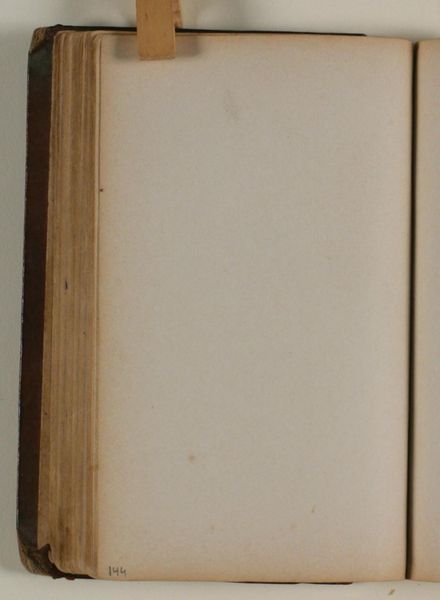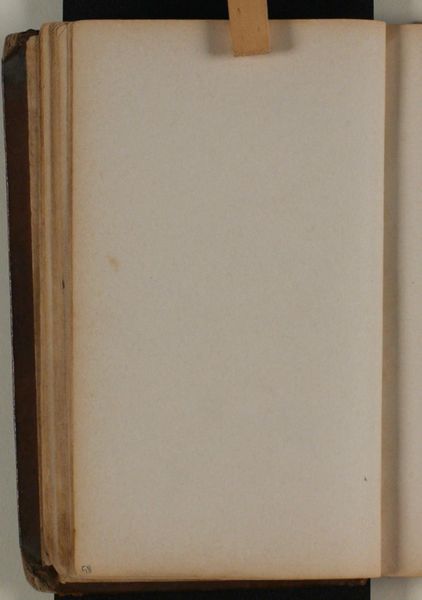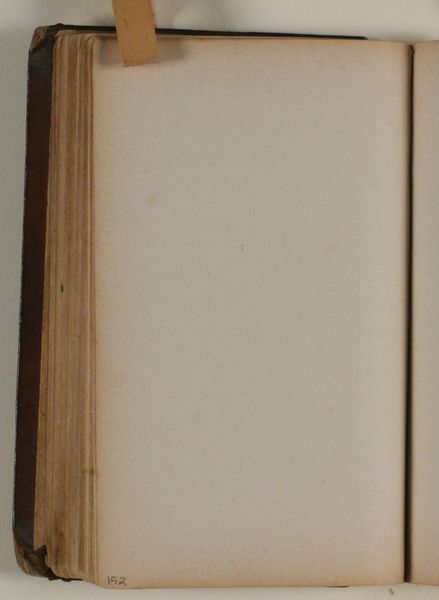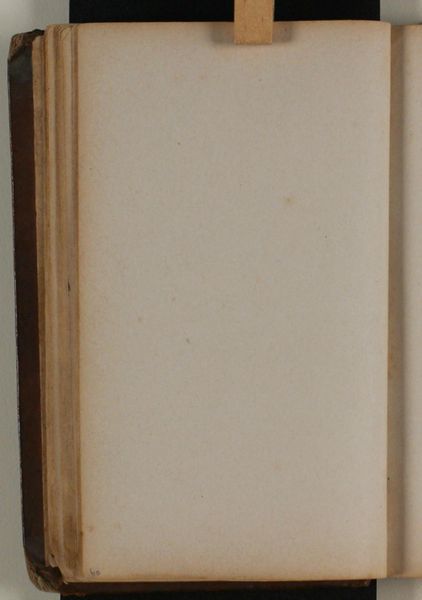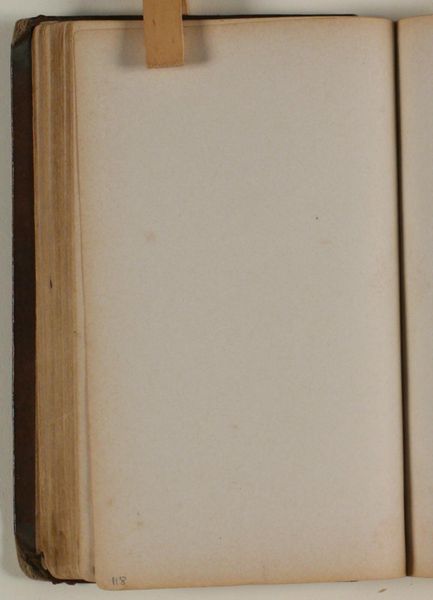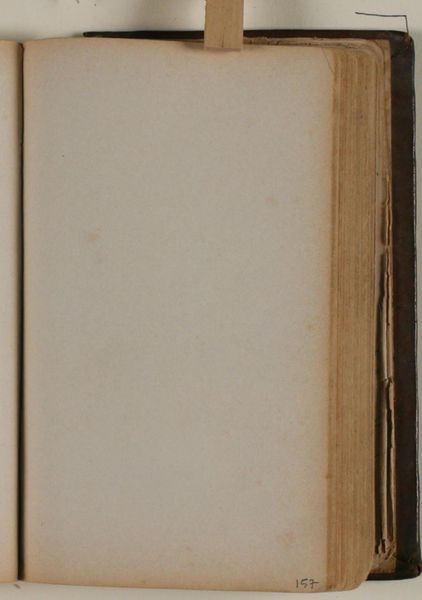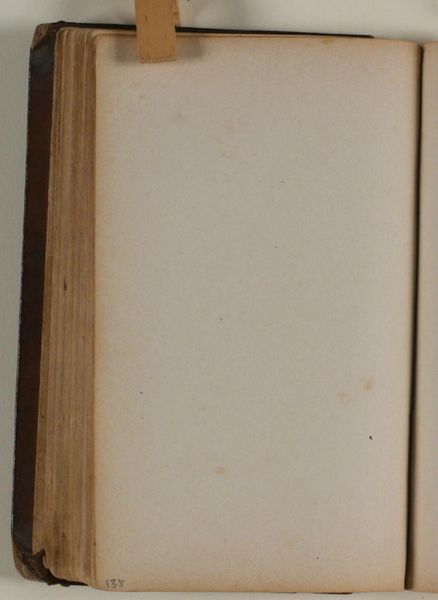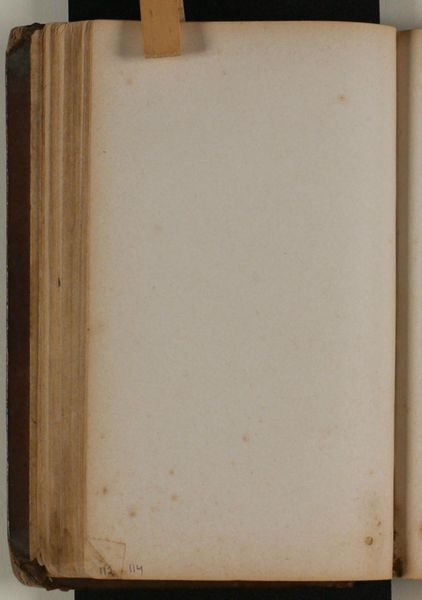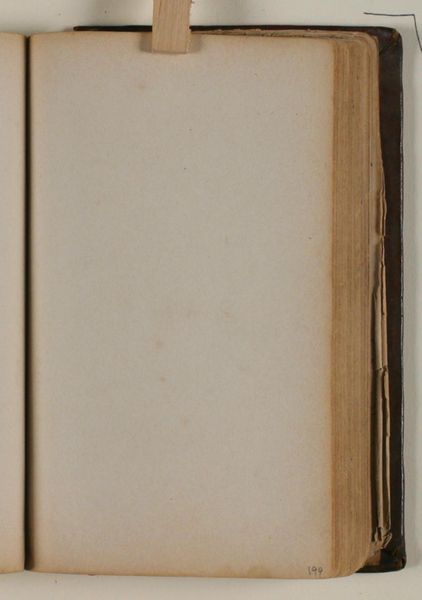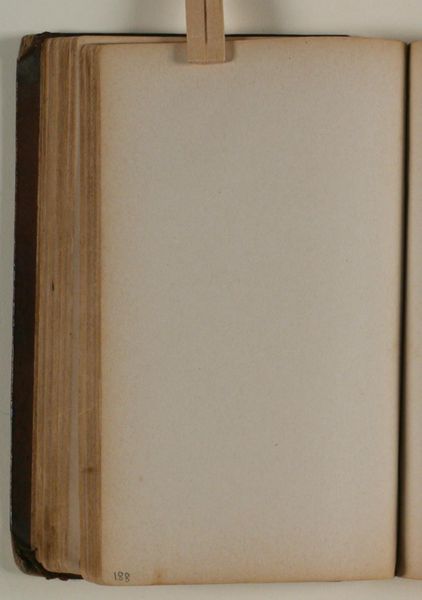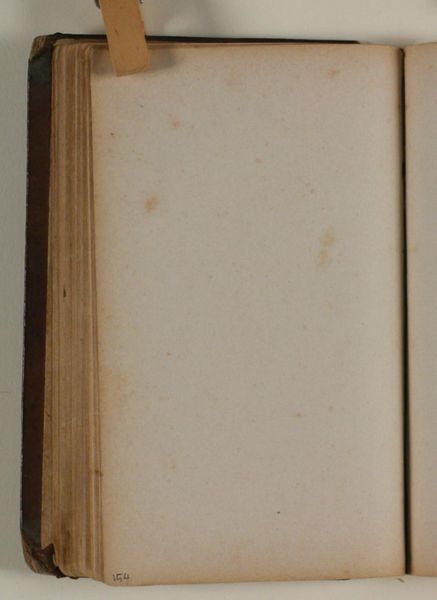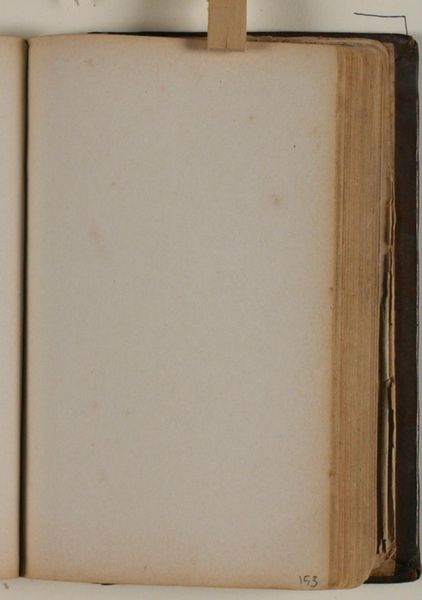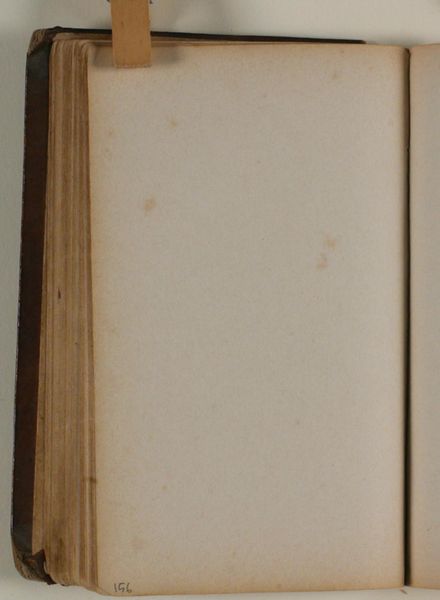
drawing, paper
#
drawing
#
paper
#
coloured pencil
Editor: This work is titled "blank", by Niels Larsen Stevns, likely created sometime between 1864 and 1941. It appears to be a drawing on paper, perhaps with coloured pencil. Honestly, it’s just a blank page in a bound book or sketchbook, it looks old, worn. How do we interpret something that is intentionally nothing? Curator: That "nothingness" is precisely the point, isn't it? Consider the historical context. This was a period of intense artistic experimentation. The social role of art was being challenged. Artists began questioning traditional forms and subject matter. What if Stevns is deliberately presenting us with a space of potential, challenging the viewer to project their own ideas onto this page? Editor: So, it’s less about what IS there, and more about the possibilities, the anticipation of what COULD be there? A reflection on art’s very function, maybe? Curator: Precisely. Think about the politics of the art world at the time. There was academic pressure to conform, to represent power, prestige and classical subject matter. By offering a blank, could Stevns be subtly rebelling against those expectations, claiming space for artistic freedom and a dialogue between the viewer and artwork itself? What expectations do *we* bring to it, looking at this image now, today? Editor: I hadn't considered it in that light, but it does force you to think about what you expect from a work of art. Maybe the museum’s presentation of this blank page transforms it into a social commentary? Curator: Museums have always shaped art’s meaning through display and interpretation. How does this 'blank' artwork alter the perception of everything around it? Does it change how you view other drawings, completed artworks? Editor: It certainly does! It’s like a pause, a moment of reflection amidst everything else on display. I see how the cultural and political landscape really shapes the meaning of art, even something seemingly non-existent like this. Curator: And that's exactly what makes art history so compelling; revealing the dialogue that makes artistic value relevant through changing values and societies.
Comments
No comments
Be the first to comment and join the conversation on the ultimate creative platform.
